Giochi dell'Oca e di percorso
(by Luigi Ciompi & Adrian Seville)
(by Luigi Ciompi & Adrian Seville)

|
Giochi dell'Oca e di percorso
(by Luigi Ciompi & Adrian Seville) |

|
 |

Torna alla ricerca giochi (back to game search) |
 |
| Sugoroku | ||
 |
Versione stampabile
 |
Invia una segnalazione

|
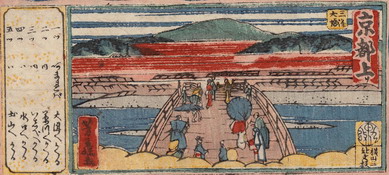 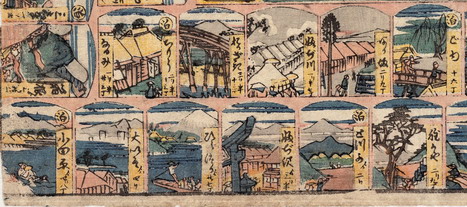 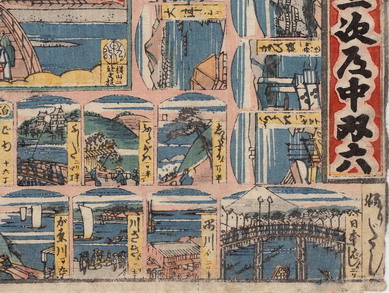 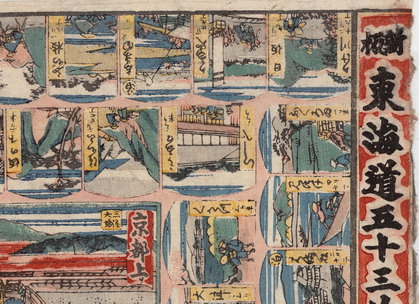 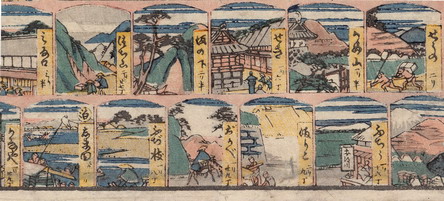   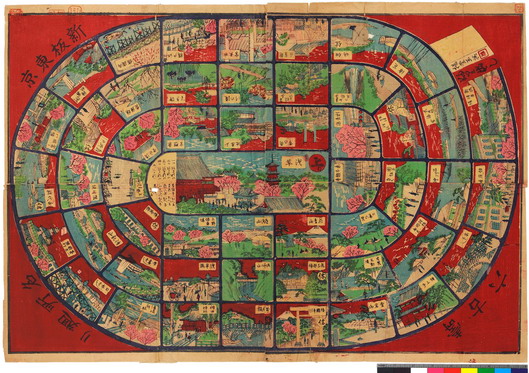  |
primo autore: | Anonimo |
| secondo autore: | Non indicato | |
| anno: | 1850/1900 | |
| luogo: |
Giappone |
|
| periodo: | XIX secolo (3°-4°/4) | |
| percorso: | Percorso di 53 caselle numerate | |
| materiale: | carta (paper) (papier) | |
| dimensioni: | 407X335 | |
| stampa: | Stampa su legno (bois gravé) (woodcut) | |
| luogo acquisto: | ||
| data acquisto: | 20-11-2020 | |
| dimensioni confezione: | ||
| numero caselle: | 53 | |
| categoria: | Varie | |
| tipo di gioco: | Gioco di percorso | |
| editore: | Non indicato | |
| stampatore: | Non indicato | |
| proprietario: | Collezione L. Ciompi | |
| autore delle foto: | L. Ciompi | |
| numero di catalogo: | 2587 | |
| descrizione: |
Gioco con 53 caselle numerate che rappresentano le stazioni del Tokaido, la strada che era il principale asse di collegamento fra Tokio e Kyoto. Vedi altri esemplari conservati presso la California Digital Library. Notare i due esemplari da titolo "Shinpan Tokyo meisho mawari sugoroku" realizzati da Yodo, Gyokuei (1847?) che ricordano la spirale del Gioco dell'Oca. REGOLE: nelle caselle. CASELLE: con didascalia. REFERENZA 1 Sugoroku (literally "double six") refers to two different forms of a Japanese board game: ban-sugoroku (board-sugoroku) which is similar to western backgammon, and e-sugoroku (picture-sugoroku) which is similar to western Snakes and Ladders. Ban-sugoroku Ban-sugoroku plays identically to backgammon (it even has the same starting position), except for the following differences: - Doubles are not special. If a player rolls doubles, each die still counts only once. - There is no "bearing off". The goal is to move all of one's men to within the last six spaces of the board. - There is no doubling cube. - "Closing out", that is forming a prime of six contiguous points with one or more of opponents men on the bar, is an automatic win. The game is thought to have been introduced from China (where it was known as Shuanglu) into Japan in the sixth century. It is known that in the centuries following the game's introduction into Japan it was made illegal several times, most prominently in 689 and 754. This is because the simple and luck-based nature of sugoroku made it an ideal gambling game. This version of sugoroku and records of playing for gambling continuously appeared until early Edo era. In early Edo-era, a new and quick gambling game called Cho-han appeared and using sugoroku for gambling quickly dwindled. This variant of the backgammon family has died out in Japan and most other countries, with the Western style modern backgammon (with doubling-cube) having some avid players. E-sugoroku A simpler e-sugoroku, with rules similar to snakes and ladders, appeared as early as late 13th century and was made popular due to the cheap and elaborate wooden block printing technology of the Edo period. Thousands of variations of boards were made with pictures and themes from religion, political, actors, and even adult material. In the Meiji and later periods, this variation of the game remained popular and was often included in child-oriented magazines. With ban-sugoroku being obsolete, today the word sugoroku almost always means e-sugoroku. |
|
| bibliografia: |
1) SALTER, Rebecca: "Japanese Popular Prints: From Votive Slips to Playing Cards", University of Hawaii Press. pag.164, 2006. 2) WONG, Sharon: "Sugoroku Games. A snapshot of Japanese popular culture"., University of Melbourne Collections, issue 21, December 2017. |
|
Vai alla ricerca giochi Vai all'elenco autori